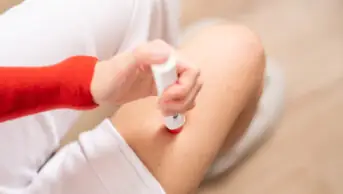Surprisingly, Dr Matheson remarked on how, before the illicit drug misuse services a pharmacy in the 70-80s really was a “wild and scary place to work” with memories of colleagues “being held at knife point”. Thinking of my recent employments in safe, friendly community pharmacies Dr Matheson appears to have succeeded to contrast how the illicit drug misuse services are now having a positive impact on community pharmacies today.
Further contrasts were drawn comparing the pharmacist’s views of illicit drug users. Dr Matheson recalled the initial attitude that pharmacists “really wanted to get them out [of the pharmacy] as quickly as possible”. Dr Matheson’s research broke down any assumptions I had that you can’t measure someone’s opinion! Her pharmacists’ ‘Attitude scoring’ graph shift to the positive from 1995 to 2006 showed an improvement in pharmacists’ views of these drug misuse services, leading to an improvement on how the service was provided. Research also carried out on illicit drug-user views improved when a rapport was built with the patient in the pharmacy, sending patient satisfaction soaring.
A startling image of a wound that a patient had received in an injection injury and attempted to self-treat by syringing the pus out was the introduction for a review of the needle exchange service. Again, Dr Matheson spoke how Scottish services acted on research into patient views to make paraphernalia (water, citric acid etc) more available to accompany these needles as well as better weekend opening hours.
So, from the initiation of Methadone maintenance to a 50% decrease in house break-ins in 1994-1997, it is no wonder that novel approaches are continuing to be thought of. Naloxone distribution in pharmacies for overdose prevention seems to be a step forward but the novel transition from calling it ‘Methadone’ to ‘opiate replacement’ to accommodate for the increased service to include buprenorphine treatments may take a bit of getting used to.
By Deborah Atkins


